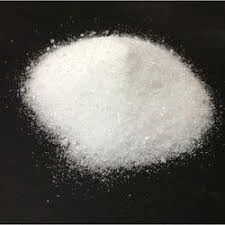Building Coating Adhesives The Role of Hydroxypropyl Methylcellulose (HPMC)
In the world of construction, the choice of materials plays a crucial role in ensuring durability, aesthetic appeal, and overall performance of buildings. Among these materials, adhesives are essential for various applications, including the installation of tiles, flooring, and wall coverings. One of the most effective additives in modern building coating adhesives is Hydroxypropyl Methylcellulose (HPMC), a cellulose ether that significantly enhances the properties of adhesives and coatings.
What is HPMC?
Hydroxypropyl Methylcellulose is a non-ionic cellulose ether derived from natural cellulose through a chemical modification process. This modification introduces hydrophobic (water-repelling) and hydrophilic (water-attracting) properties, making HPMC a versatile additive in the construction industry. It is commonly used to improve the workability, adhesion, and water retention of various building materials.
Benefits of HPMC in Building Coatings
1. Enhanced Workability HPMC possesses excellent flow properties, which contribute to the easy application of coatings. This property allows for a smoother finish and reduces the likelihood of imperfections during application, ultimately enhancing the aesthetic quality of the surface.
2. Improved Adhesion One of the primary functions of adhesives is to create a strong bond between different materials. HPMC significantly improves the adhesion properties of building coatings, ensuring that tiles and other components remain securely attached to surfaces over time. This is crucial in construction, where structural integrity is paramount.
3. Water Retention In the application of cementitious materials, water retention is key to achieving optimal curing and setting times. HPMC helps retain moisture in the adhesive layer, preventing rapid evaporation and ensuring that the adhesive sets correctly. This characteristic reduces the risk of cracking and enhances the longevity of the installed materials.
building coating adhesive hpmc

4. Thickening Agent HPMC acts as an effective thickening agent in adhesive formulations. By increasing the viscosity of the mixture, HPMC ensures that the adhesive remains stable and does not run off vertical surfaces, making it easier to work with during installation.
5. Environmental Resistance HPMC contributes to the overall durability of building coatings by improving their resistance to environmental factors such as temperature fluctuations and humidity. This resistance is crucial in maintaining the integrity of the adhesive bond, especially in areas with harsh weather conditions.
Applications of HPMC in Building Coating Adhesives
HPMC is widely used in various types of building coating adhesives, including tile adhesives, grouts, and wall coverings. Its versatile properties allow it to be incorporated into both powder and liquid formulations, making it suitable for a range of applications. Whether it’s for residential, commercial, or industrial buildings, HPMC-enhanced adhesives ensure reliable performance.
For tile installations, the use of HPMC ensures that the adhesive provides high initial tack, allowing tiles to be easily placed and repositioned during installation. In grouting applications, HPMC improves the flow and consistency of the mixture, making it easier to fill gaps and achieve a uniform finish.
Conclusion
The role of Hydroxypropyl Methylcellulose in building coating adhesives cannot be overstated. Its ability to improve workability, adhesion, moisture retention, and environmental resistance makes it a critical component for achieving high-quality construction results. As the construction industry continues to evolve, the incorporation of advanced materials like HPMC will play a key role in enhancing the performance and longevity of building projects. With its myriad of benefits, HPMC stands out as an essential ingredient in the formulation of modern adhesives, helping to pave the way for more innovative building solutions.
-
The Application and Significance of Construction RdpNewsMay.19,2025
-
Industrial Grade HpmcNewsMay.19,2025
-
Building Coating Adhesive Building Coating Adhesive HpmcNewsMay.19,2025
-
Application Of Hpmc For Detergent For Detergent In DetergentsNewsMay.19,2025
-
Application Of Hpmc Cellulose In Cement-Based MaterialsNewsMay.19,2025
-
Application Of High Quality Hpmc For Construction In The Field Of ConstructionNewsMay.19,2025




